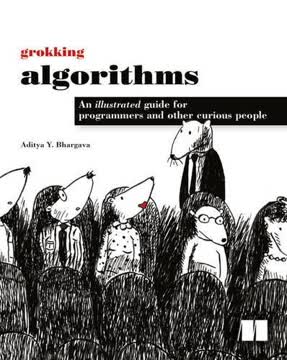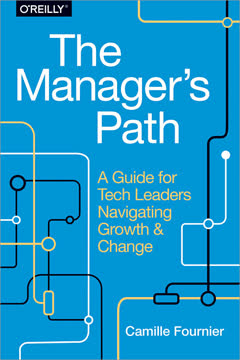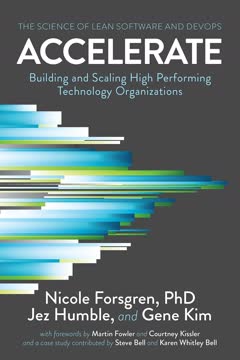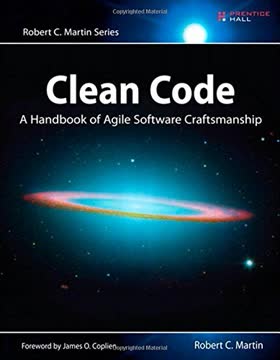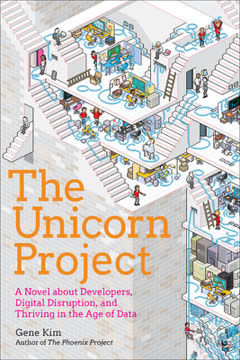重点摘要
1. 掌控你的大脑:理解L模式和R模式思维
R模式在日常工作中非常重要:它充当了长期记忆和“进行中”想法的搜索和检索引擎。
大脑的双CPU模型。 大脑以两种不同的处理模式运行:L模式(线性、逻辑、基于语言)和R模式(丰富、整体、直觉)。L模式负责逐步处理和语言交流,而R模式擅长模式识别、创造力和整体思维。
利用两种模式。 为了最大化认知潜力,关键是要同时激活两种模式并促进它们的合作。增强R模式思维的技巧包括:
- 增加感官输入(例如,在解决问题时使用触觉物体)
- 绘画和视觉思维练习
- 冥想和正念练习
- 创建隐喻和类比
通过理解并有意识地利用这两种模式,你可以显著提高问题解决能力、创造力以及工作和个人生活中的整体认知表现。
2. 拥抱德雷福斯模型:从新手到专家的旅程
专家是任何领域知识和信息的主要来源。他们不断寻找更好的方法和更好的做事方式。
技能获取的五个阶段。 德雷福斯模型概述了从新手到专家的进展:
- 新手:依赖无上下文的规则,需要明确的指示
- 高级初学者:开始识别情境方面
- 能干者:开发概念模型并能排除故障
- 熟练者:整体看待情况并能自我纠正
- 专家:依赖直觉和隐性知识
对学习和教学的影响。 理解这些阶段有助于:
- 根据当前技能水平定制学习方法
- 根据他人的阶段提供适当的指导
- 认识到规则思维和直觉思维的重要性
通过识别你在各种技能中的当前阶段,你可以更有效地规划你的学习旅程,并在向专家进阶的过程中欣赏基于经验的直觉的价值。
3. 利用你的直觉:达到专家级表现的关键
专家依靠直觉,而不是理性。
培养直觉。 直觉不是神秘的,而是广泛经验和模式识别的结果。要发展它:
- 在你的领域获得多样化的经验
- 有意识地反思过去的决策和结果
- 进行各种情景的“心理模拟”
平衡直觉和分析。 虽然直觉对专家表现至关重要,但重要的是:
- 用分析思维验证直觉见解
- 识别直觉可能有偏见或不可靠的情况
- 将直觉作为深入调查的起点
通过有意识地发展和适当地应用直觉,你可以做出更快、更有效的决策,并在你的专业领域达到更高的表现水平。
4. 调试你的大脑:识别并克服认知偏差
意识到这些“漏洞”是减轻它们的第一步。
常见的认知偏差。 我们的思维容易受到各种系统性错误的影响,包括:
- 确认偏差:寻找确认现有信念的信息
- 锚定效应:过度依赖首次遇到的信息
- 可得性启发:高估我们容易回忆起的事件的可能性
减轻偏差的策略。 为了对抗这些偏差:
- 积极寻找与你的信念相矛盾的证据
- 在做决策前考虑多种观点
- 使用结构化的决策过程来减少偏差的影响
- 定期反思并挑战自己的假设
通过承认并积极努力克服我们思维中的这些“漏洞”,我们可以做出更理性的决策,并在生活的各个方面提高问题解决能力。
5. 有计划地学习:设定SMART目标并管理你的知识组合
配方26 有计划地投资学习。
SMART学习目标。 设定目标应:
- 具体:明确定义且不含糊
- 可衡量:量化进展和最终结果
- 可实现:现实且可达到
- 相关:与更广泛的职业或个人目标一致
- 有时限:有明确的截止日期或时间框架
知识组合管理。 将你的技能和知识视为金融组合:
- 多样化:学习一系列互补技能
- 定期投资:持续学习胜过突击学习
- 审查和再平衡:定期评估和调整你的技能组合
- 考虑风险/回报:在安全的、已建立的技能和潜在高回报的新兴技术之间取得平衡
通过这种有计划、结构化的方法来学习,你可以确保持续成长,并在快速变化的职业环境中保持相关性。
6. 有效获取经验:玩耍、失败和巩固神经通路
配方35 在你的环境中探索、发明和应用——安全地。
通过玩耍学习。 采用一种玩耍、探索的学习方法:
- 无惧失败地进行实验
- 参与“艰难的乐趣”——具有挑战性但引人入胜的活动
- 使用游戏、模拟和角色扮演来探索概念
有成效的失败。 创建一个安全的失败环境:
- 设置沙盒进行无风险实验
- 分析失败以获取见解和学习机会
- 培养一种将失败视为垫脚石的成长心态
心理练习和可视化。 利用大脑无法区分生动想象和真实体验的特点:
- 使用心理排练来为挑战任务做准备
- 可视化成功的结果以为成功做好准备
- 练习“内在游戏”技巧以减少表现焦虑
通过结合这些方法,你可以加速技能获取,建立信心,并发展达到专家表现所需的神经通路。
7. 管理注意力:提高专注力并优化当前环境
配方39 学会集中注意力。
培养专注力。 在一个充满干扰的时代,有意识地管理注意力至关重要:
- 练习正念冥想以提高注意力
- 使用番茄工作法等时间管理技巧
- 创建一个无干扰的环境以进行深度工作
情境管理。 最小化情境切换的认知成本:
- 将相似的任务批量处理
- 使用工具和技巧快速捕捉和组织想法
- 开发进入和退出不同工作模式的仪式
有意识的练习。 优化你的学习和工作时间:
- 为每个练习时间设定明确、具体的目标
- 寻求对你表现的即时反馈
- 挑战自己,超越当前能力
通过掌握专注力和情境管理的艺术,你可以显著提高生产力、学习效率以及在职业和个人追求中的整体认知表现。
最后更新日期:
FAQ
What's Pragmatic Thinking and Learning about?
- Cognitive Science Focus: The book delves into cognitive science, neuroscience, and learning theories to improve thinking and learning skills.
- Refactoring Wetware: It humorously refers to the brain as "wetware," suggesting that mental processes can be optimized like software.
- Broad Audience: While targeted at programmers, its insights are applicable to anyone seeking to enhance problem-solving and learning abilities.
Why should I read Pragmatic Thinking and Learning?
- Enhance Learning Skills: Offers practical techniques to improve learning and adaptability to new challenges.
- Real-World Applications: Emphasizes the importance of context in learning, crucial for success in any field.
- Expert Insights: Authored by Andy Hunt, it draws on extensive research and personal experience for valuable advice.
What are the key takeaways of Pragmatic Thinking and Learning?
- Active Learning: Learning should be an active process, engaging with material through exploration and practice.
- Embrace Mistakes: Mistakes are valuable learning opportunities, essential for growth and improvement.
- Diversity in Learning: Embracing diverse perspectives enhances creativity and problem-solving abilities.
What is the Dreyfus Model of Skill Acquisition in Pragmatic Thinking and Learning?
- Five Stages: The model outlines stages from novice to expert, each representing different skill levels.
- Contextual Learning: Progressing through stages involves applying knowledge in context, crucial for expertise.
- Practical Application: Helps individuals recognize their current skill level and what they need to advance.
How does Pragmatic Thinking and Learning define "wetware"?
- Brain Analogy: "Wetware" humorously refers to the human brain and its cognitive processes.
- Refactoring Mental Processes: Suggests that thinking and learning processes can be improved through practice.
- Focus on Improvement: Encourages active work on mental processes to enhance problem-solving and learning.
What are some techniques for enhancing learning mentioned in Pragmatic Thinking and Learning?
- Mind Mapping: Visualizes relationships between concepts, aiding understanding and memory.
- SQ3R Method: A reading strategy promoting active engagement for better retention.
- Deliberate Practice: Focused, intentional practice is emphasized for skill development.
How can I manage focus and attention according to Pragmatic Thinking and Learning?
- Increase Focus: Techniques like setting goals and minimizing distractions enhance concentration.
- Defocus to Focus: Allowing the mind to wander can lead to creative insights and solutions.
- Manage Interruptions: Creating a conducive environment for work improves focus significantly.
What cognitive biases should I be aware of according to Pragmatic Thinking and Learning?
- Anchoring Bias: Initial information unduly influences subsequent judgments and decisions.
- Confirmation Bias: Tendency to seek information that confirms preconceptions, leading to flawed decisions.
- Self-Serving Bias: Attributing successes to oneself and failures to external factors distorts self-assessment.
How does Pragmatic Thinking and Learning suggest I harvest insights from my R-mode?
- Image Streaming: Verbalizing mental images taps into the subconscious for insights.
- Free-Form Journaling: Writing without censorship clarifies thoughts and surfaces hidden ideas.
- Walking and Reflection: Physical activity like walking frees the mind to explore ideas.
What are some effective ways to integrate L-mode and R-mode thinking in Pragmatic Thinking and Learning?
- R-mode to L-mode Flow: Start with R-mode activities for idea generation, then transition to L-mode for analysis.
- Pair Programming: Collaborating integrates different cognitive styles, enhancing problem-solving.
- Use of Metaphors: Metaphors bridge abstract concepts and concrete understanding, facilitating insight.
How does Pragmatic Thinking and Learning address the concept of failure?
- Failure as Learning: Frames failure as essential for learning, providing valuable feedback.
- Safe Environment: Emphasizes creating an environment where failure is accepted as a learning opportunity.
- Resilience Building: Coping with failure builds resilience and adaptability, encouraging experimentation.
How can I apply the concepts from Pragmatic Thinking and Learning in my daily life?
- Implement Learning Techniques: Use mind maps and SMART goals for organizing thoughts and tracking progress.
- Practice Mindfulness: Incorporate meditation to enhance focus and reduce stress.
- Embrace Mistakes: View failure as a learning opportunity, reflecting on mistakes for future improvement.
评论
《实用思维与学习》因其在提高认知技能和学习技巧方面的实用建议而备受赞誉。读者们欣赏书中对认知科学、心理学和编程概念的融合。许多人认为这本书具有变革性,提供了关于大脑功能、专注力管理和技能获取的宝贵见解。德雷福斯模型和关于刻意学习的建议经常被强调。尽管有些人批评其风格过于简单或引用过时,但大多数评论者仍然推荐这本书给希望提升心智能力和解决问题技能的程序员和知识工作者。
Similar Books


